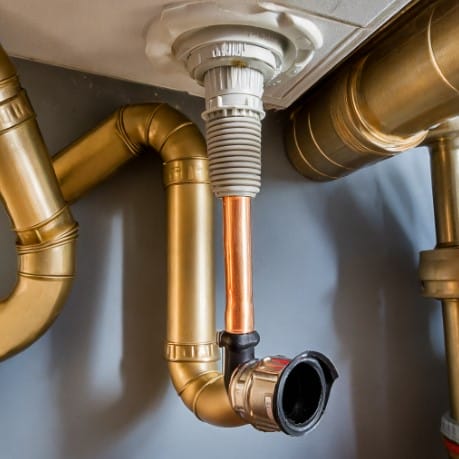If the P-trap is lower than the drain pipe, you can fix it by adjusting the height of the P-trap. This involves loosening the slip nuts, raising the P-trap to the proper level, and then re-tightening the slip nuts to secure them in place.
Dealing with a P-trap that is lower than the drain pipe can lead to drainage issues and potential leaks. Correcting this problem is essential to maintain proper plumbing functionality and prevent water damage. By following the steps to adjust the P-trap height, you can effectively resolve this issue and ensure smooth water flow in your plumbing system.
In this guide, we will outline the necessary steps and provide detailed instructions for fixing a P-trap that is lower than the drain pipe. By the end of this article, you will have the knowledge and confidence to tackle this repair on your own.
Troubleshooting P Trap Issues
The P-trap is an essential part of a plumbing system that prevents sewer gases from entering the building and maintaining the proper flow of water. Understanding the P-trap configuration is crucial as it consists of a U-shaped pipe that holds water to create a seal. When the P-trap is lower than the drain pipe, it can lead to drainage issues and potential leaks. To troubleshoot this problem, first, identify if the P-trap is indeed lower than the drain pipe. This can be done by visually inspecting the pipes under the sink or using a level tool to measure the difference in height. If the P-trap is lower, it’s important to raise it to the correct level to ensure proper drainage and prevent any potential water damage.
Signs Your P Trap Is Problematic
When your P trap is lower than the drain pipe, you may notice various signs indicating a problem. Water draining slowly from the sink or tub is a common indication of a problematic P trap. Additionally, foul odors emitting from the drain can be a sign of a P trap issue. Furthermore, if you hear gurgling sounds during water drainage, it could be due to the P trap being lower than the drain pipe.
P Trap Lower Than Drain Pipe: Step By Step Fix
If the P trap is lower than the drain pipe, it may lead to improper drainage and sewage odors. Start by assessing the initial positioning of the P trap. Use a plumber’s level and measure the vertical distance between the P trap and the drain pipe. Gather the necessary tools and materials: a screwdriver, adjustable wrench, new P trap, and pipe sealant. Prior to starting the repair, ensure to take proper safety precautions such as wearing protective gloves and eyewear. Consider turning off the water supply to the affected area to prevent any accidental leaks or spills.

Credit: m.youtube.com
Step-by-step Guide To Adjusting The P Trap
When adjusting a P trap that is lower than the drain pipe, it’s important to disconnect the P trap safely to begin the process. Ensure the proper height for the P trap by measuring the distance from the floor to the center of the trap arm. To raise the P trap to the appropriate level, use a hacksaw to trim the tailpiece, allowing for the right elevation. Finally, ensure a tight and secure connection to avoid leaks by using slip-joint pliers to adjust the compression nuts. This step-by-step guide will help you fix the P trap efficiently and effectively.
Realigning Your Plumbing Correctly
When realigning your plumbing to fix a P trap lower than the drain pipe, it’s important to ensure the correct length of the pipes. Carefully cut the pipes as needed to align them properly. Securing the connections with the right fixtures is crucial to prevent leaks and ensure proper water flow. Test the water flow and thoroughly check for any leaks to confirm that the realignment has been successful.
Securing Your P Trap’s New Position
If you find your P trap lower than the drain pipe, it is crucial to secure its new position to prevent future leaks and obstructions. Begin by making final adjustments to ensure a snug fit between the P trap and the drain pipe. Take the time to carefully align and tighten the fittings, using the appropriate tools for a secure bond.
To maintain the alignment of your P trap and drain pipe, regularly check for any signs of shifting or loosening. Minor adjustments can prevent potential issues and extend the lifespan of your plumbing system. By implementing these measures, you can ensure the proper functioning and longevity of your P trap and drain pipe.
Post-fix Processes And Troubleshooting
After fixing the P-trap lower than the drain pipe, it is important to clean up the work area. Ensure that all tools and materials are properly stored, and that any spills or debris are cleaned up. Inspect the area for any potential leaks or loose connections to address them promptly. Proceed to monitor the drain performance after the fix. Observe the flow of water through the drain pipe to ensure that it is functioning as it should. Pay attention to any signs of slow drainage or gurgling sounds, which could indicate further issues. Regularly check the P-trap and drain pipe for any buildup or blockages and address them as needed to maintain proper functionality.
Ensuring Long-term Functionality
Regular maintenance is key to ensuring the long-term functionality of your plumbing system. Make sure to regularly check for any issues with the P-trap and drain pipe, and clean them as needed. It’s important to address any leaks or clogs promptly to prevent further damage.
If you find that the P-trap is lower than the drain pipe, it is crucial to address this issue promptly. Attempt to adjust the position of the P-trap to align it properly with the drain pipe. If issues persist, it is advisable to seek professional assistance to avoid any potential damage to the plumbing system.
Frequently Asked Questions Of P Trap Lower Than Drain Pipe: Step-By-Step Fix
Can My P-trap Be Lower Than Drain Pipe?
Yes, the P-trap can be lower than the drain pipe to ensure proper drainage and prevent clogs. It should be installed with a slight downhill slope for effective function.
What To Do If My P-trap Is Too Low?
To fix a low P-trap, raise it to the proper height for proper drainage and sewage flow. This can be done by adjusting its position or installing a new one at the correct height. Ensure it remains secure to prevent leaks and function efficiently.
What To Do If Sink Is Lower Than Drain?
If your sink is lower than the drain, use a plunger to clear blockages. Adjust the sink height if possible to align with the drain, or consider professional assistance if necessary. Regularly check for clogs to prevent further issues.
How Do You Raise The Height Of The P-trap?
To raise the height of the P-trap, add an extension piece. Connect the extension to the existing trap. Ensure a secure and watertight connection. Adjust as needed for proper alignment. Regularly check for leaks.
Conclusion
Fixing a P-trap lower than the drain pipe is a straightforward DIY task. By following the step-by-step guide provided, you can effectively resolve this issue without the need for professional help. Ensuring that your plumbing system is properly configured is crucial for the smooth functioning of your home, and this fix will give you peace of mind.

